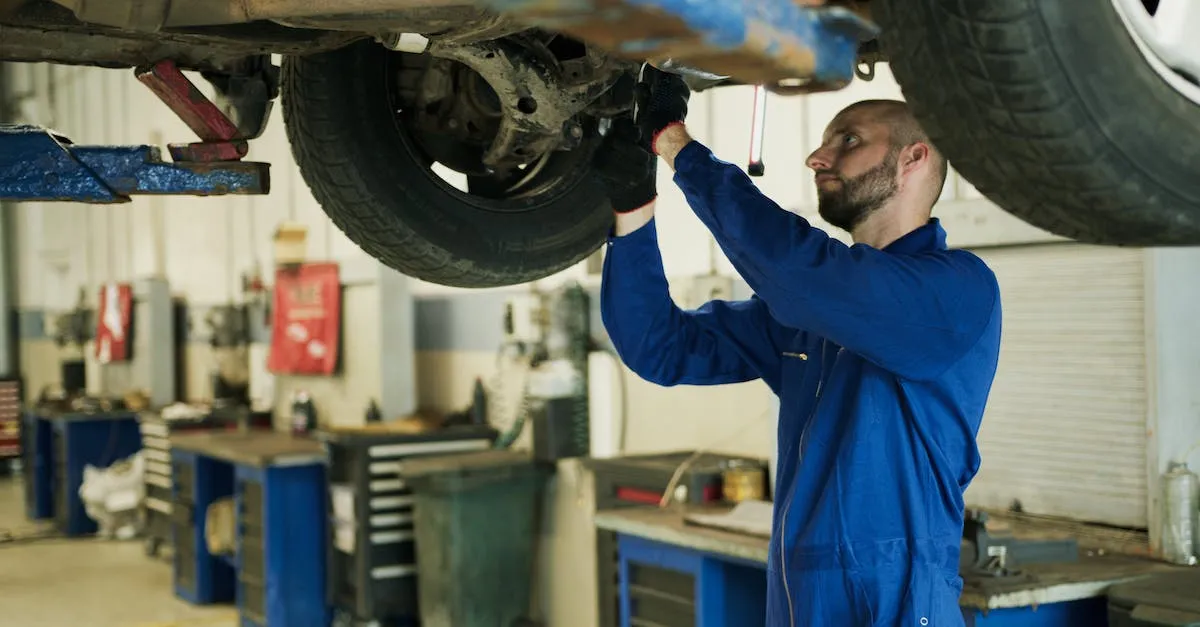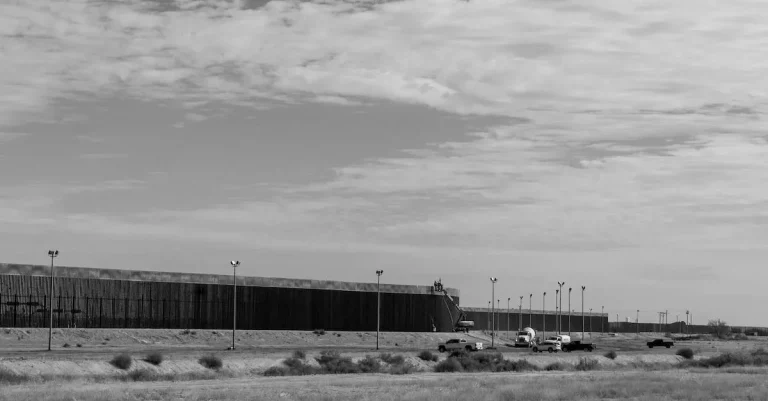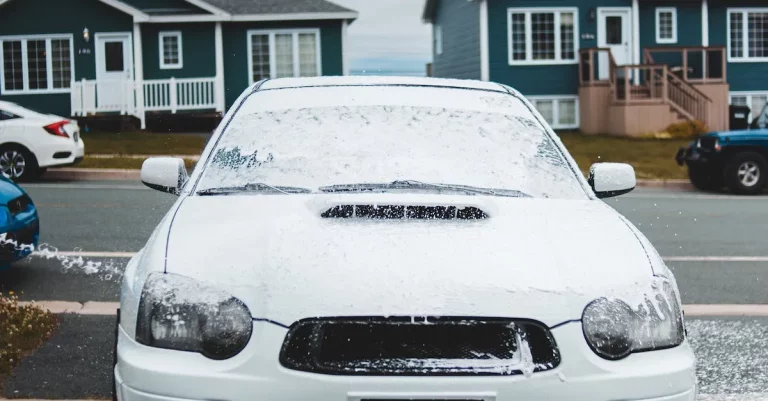Does My Car Pass Inspection In Texas If The Check Engine Light Is On?
Seeing the dreaded check engine light pop up on your dashboard can be worrying, especially when your vehicle’s annual inspection is coming up. Texans rely on their cars to get around far-flung cities and rural areas alike, so passing inspection is essential.
If you’re short on time, here’s a quick answer to your question: Vehicles can pass inspection in Texas with the check engine light on, but only if the reason does not affect emissions. Certain emissions-related fault codes will lead to automatic failure.
Texas Vehicle Emissions Inspection Requirements
OBD-II scan for emissions monitors and fault codes
In Texas, vehicles are required to undergo an emissions inspection as part of the registration process. One of the key components of this inspection is the On-Board Diagnostics (OBD) system scan. During the OBD-II scan, the vehicle’s computer is checked for any fault codes related to emissions.
If the check engine light is on, it is a clear indication that there may be an issue with the vehicle’s emissions system. The OBD-II scan will provide more detailed information about the specific fault codes and emissions monitors that are not functioning properly.
It is important to note that if the check engine light is on, the vehicle will not pass the emissions inspection. The check engine light serves as a warning sign that there is a problem with the vehicle’s emissions system, and it needs to be addressed before the vehicle can be considered compliant with Texas emissions standards.
Visual inspection of emissions equipment
In addition to the OBD-II scan, the emissions inspection in Texas also includes a visual inspection of the vehicle’s emissions equipment. This includes checking for the presence and proper functioning of components such as the catalytic converter, exhaust gas recirculation (EGR) valve, and oxygen sensors.
The visual inspection ensures that all the necessary emissions equipment is in place and functioning correctly.
If the check engine light is on, it is possible that there may be a problem with one of these emissions components. In such cases, it is essential to address the issue and have the necessary repairs done before attempting to pass the emissions inspection.
For more information on Texas vehicle emissions inspection requirements, you can visit the official website of the Texas Department of Motor Vehicles at www.txdmv.gov. They provide detailed information about the inspection process, including the specific requirements for passing the emissions test.
Check Engine Light Causes That Allow Passing
Having the check engine light on can be a cause for concern for many drivers in Texas, as it may lead to a failed inspection. However, there are certain check engine light causes that may allow a vehicle to pass inspection. Let’s explore some of these causes:
Loose gas cap or small EVAP leak
One common cause of a check engine light being illuminated is a loose gas cap or a small EVAP (Evaporative Emission Control System) leak. In these cases, the check engine light may come on as a result of a minor issue that does not affect the overall performance or emissions of the vehicle.
If the inspection determines that the issue is related to a loose gas cap or a small EVAP leak, the vehicle may still pass the inspection.
Non-emissions related sensor faults
Another possible cause of a check engine light being on is a fault with a non-emissions related sensor. Some sensors in the vehicle, such as those responsible for monitoring the air/fuel mixture or engine temperature, may have faults that trigger the check engine light.
If these faults do not have a direct impact on the emissions system, the vehicle may still pass inspection. However, it is important to address these sensor faults to ensure the proper functioning of the vehicle.
Pending codes that aren’t yet set
Sometimes, the check engine light may be illuminated due to pending codes that haven’t been fully set. These pending codes indicate that the vehicle’s onboard computer has detected a potential issue but hasn’t yet confirmed it as a solid fault. In such cases, the vehicle may still pass inspection.
However, it is crucial to address these pending codes and resolve any potential issues before they become more serious.
It is important to note that these causes may vary depending on the specific make and model of the vehicle. Additionally, it is always recommended to address any check engine light issues promptly, as they may indicate underlying problems that can affect the vehicle’s performance and emissions.
For more information on check engine light causes and passing inspection in Texas, you can visit the official website of the Texas Department of Motor Vehicles at www.txdmv.gov.
Failing Emissions Codes and Repair Options
Catalytic converter, oxygen sensor, EGR faults
When the check engine light is on, it often indicates that there is a problem with the emissions system of your vehicle. Common issues that can trigger the check engine light include faults in the catalytic converter, oxygen sensor, and EGR (Exhaust Gas Recirculation) system.
The catalytic converter is responsible for reducing harmful emissions by converting them into less harmful substances. If it fails, it can cause an increase in emissions and trigger the check engine light.
The oxygen sensor measures the amount of oxygen in the exhaust gases and helps the engine control module adjust the air-fuel mixture. A faulty oxygen sensor can lead to poor fuel economy and increased emissions, resulting in a check engine light.
The EGR system recirculates a portion of the exhaust gases back into the intake manifold to reduce nitrogen oxide emissions. If the EGR valve or other components of the system malfunction, it can cause the check engine light to illuminate.
Getting the exact code read
When your check engine light comes on, it’s essential to get the exact code read to determine the specific issue. Many auto parts stores offer free code reading services, or you can invest in a code reader yourself.
Once you have the code, you can look up the specific problem online or consult a repair manual to understand what needs to be fixed.
It’s important to note that a check engine light can be triggered by various issues, and not all of them are related to emissions. Therefore, it’s crucial to get the code read to avoid unnecessary repairs or overlook more critical problems.
Making necessary repairs
Once you have identified the specific issue causing the check engine light, you can determine the necessary repairs. In some cases, the problem may be a simple fix that you can handle yourself, such as replacing a faulty sensor or cleaning the EGR valve.
However, for more complex issues like a failing catalytic converter, it’s best to consult a qualified mechanic. They have the expertise and diagnostic tools to properly diagnose and repair the problem.
Ignoring or delaying necessary repairs can lead to increased emissions, reduced fuel efficiency, and potential damage to other engine components.
Remember, passing the emissions test is not possible if your check engine light is on. So, it’s crucial to address the issue promptly to ensure your car passes inspection and remains environmentally friendly.
For more information on Texas car inspection regulations and emissions codes, you can visit the official Texas Department of Motor Vehicles website: https://www.txdmv.gov/motorists/register-your-vehicle
Getting a One-Time Waiver for Inspection
If you find yourself in a situation where your check engine light is on and you’re worried about passing the inspection in Texas, there is a possibility of obtaining a one-time waiver. This waiver allows you to pass the inspection even if your check engine light is on, but it’s important to understand the requirements and limitations.
Qualifying for a waiver if repairs exceed limit
If the cost of repairs for your vehicle exceeds a certain limit, you may be eligible for a waiver. The specific limit varies depending on the model year of your vehicle. For example, if your vehicle is 2 through 24 model years old, the cost of repairs must exceed 1.5 times the maximum allowable emissions-related repair cost.
On the other hand, if your vehicle is 25 model years or older, the cost of repairs must exceed the maximum allowable emissions-related repair cost. It’s important to note that this waiver is only applicable to emissions-related repairs.
To qualify for this waiver, you must meet the following criteria:
- Your vehicle must have failed the emissions portion of the inspection.
- You must have spent a certain amount of money on emissions-related repairs.
- You must have made these repairs within a specified timeframe.
- You must have a receipt for the repairs.
It’s important to keep in mind that this waiver is a one-time exemption. Once you receive it, you won’t be eligible for another waiver for the same issue in the future.
Subsequent waiver eligibility requirements
If you have already received a waiver in the past, there are additional requirements to be eligible for another waiver. These requirements include:
- Your vehicle must have failed the emissions portion of the inspection.
- You must have made additional emissions-related repairs.
- You must have spent a certain amount of money on these additional repairs.
- The repairs must have been made within a specified timeframe.
- You must have a receipt for these additional repairs.
It’s important to note that subsequent waivers are subject to additional scrutiny, and the requirements may vary depending on the specific circumstances. It’s recommended to consult the official Texas Department of Motor Vehicles website for the most up-to-date information regarding waiver eligibility.
Steps to Take When Facing Inspection With CEL On
Diagnose the specific code
When your check engine light (CEL) is on, the first step is to determine the specific code that triggered the warning. This can be done by using an OBD-II scanner, which can be purchased or borrowed from an auto parts store.
The scanner will provide you with a code that corresponds to a particular issue in your vehicle’s system. It’s important to write down this code, as it will help you understand the problem and guide you in the next steps.
Determine if repairs can wait
Once you have the specific code, you can assess whether the repairs needed can wait or if they require immediate attention. Some codes indicate minor issues that may not affect the overall performance or safety of your vehicle.
However, other codes may indicate more serious problems that could potentially cause further damage if left unresolved. It is recommended to consult with a qualified mechanic or refer to reputable online resources, such as Carfax or YourMechanic, to understand the severity of the issue and make an informed decision.
Consider waiver if over limit
In Texas, if your vehicle fails the emissions inspection due to a check engine light being on, you may be eligible for a waiver if certain conditions are met. The waiver allows you to pass the inspection despite the CEL being on.
However, this option is only available if you have spent a certain amount of money on attempts to repair the issue and have documentation to support the expenses. The specific requirements for a waiver can vary, so it’s important to check with the Texas Department of Motor Vehicles or your local inspection station for more information.
Conclusion
While it is possible to pass Texas vehicle inspections with minor check engine lights, certain emissions-related codes will trigger instant failure. Knowing the specifics of your fault code is key to understanding your options.
Drivers facing inspection with their check engine light on should analyze the code, determine necessary repairs, and seek a waiver if the cost exceeds limits. With preparation, it’s often possible to pass inspection even with a glowing CEL.








